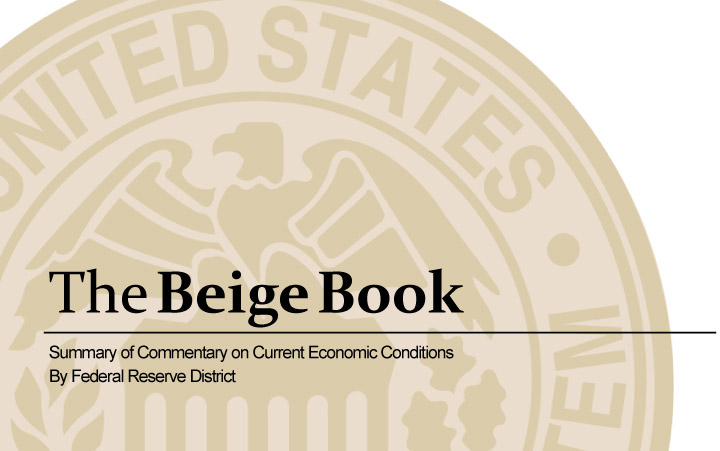What Is The Beige Book?
What Is The Beige Book?
The Federal Reserve’s Federal Open Market Committee (FOMC) evaluates a plethora of factors before making any monetary policy decisions at meetings, which generally take place eight times a year. One source that helps inform their policy decisions is the “Beige Book,” which is the informal name for the FOMC’s “Summary of Commentary on Current Economic Conditions by Federal Reserve District.”1
The Beige Book gives a collective glimpse of the U.S. economy, composed of reports from each of the 12 Federal Reserve districts. The reports include analysis of facts and anecdotal information obtained through interviews with economic experts and business contacts familiar with the economic activity in each district across the country. The survey is conducted before each FOMC meeting and is published two weeks prior, giving members time to study the information.2
The Beige Book covers three general categories: Overall Economic Activity, Employment and Wages, and Prices — with highlights from each Federal Reserve district. In the most recent report, it was determined that overall economic activity and employment continued to grow at a modest pace, while price inflation was down slightly from the previous reporting period.3
In its latest meeting on July 31, the committee reduced the federal funds rate by a quarter point, to a range of 2% to 2.25%. This was the first interest rate reduction in over a decade, which Fed Chairman Jerome Powell called a “midcycle adjustment to policy.”4
The market response to the cut, and Powell’s characterization of it, tested the resilience of investors. Initially, the market reacted in dramatic fashion. By the end of the day in which the cut was announced:5
- The S&P 500 fell by 1.09%
- The Dow Jones Industrial Average fell by 1.23%
- The Nasdaq fell by 1.19%
However, by noon the next day, the S&P 500 had rebounded up 1% from the previous day’s losses. The general theory is that investors took time to digest the fact that the economy was still on solid footing and there was no need to panic.6
However, by mid afternoon that same day, the Trump administration announced it would be imposing an additional 10% tariff on Chinese imports to the U.S. The news affected the markets once again, with all three indexes closing down by the end of the day.7
There are a couple of important lessons to remember:
First, recognize that no one can predict the markets and no one has all the answers — including your favorite investment pundits on TV and the constant cycle of news headlines.
Second, it’s generally not a good idea to choose your investments based on continually changing economic factors, including the direction of interest rates. Ideally, it’s best to construct a portfolio based on your financial objectives, tolerance for market risk and investment timeline. We can help you design such a portfolio and keep you focused even when the market seems to go awry. Give us a call at (318) 387-8918 to schedule a complimentary consultation to discuss your unique situation!
Content prepared by Kara Stefan Communications.
1 Federal Reserve Bank of San Francisco. July 18, 2018. “What Is the Beige Book?” https://www.frbsf.org/our-district/about/sf-fed-blog/beige-book-basics/. Accessed Aug. 1, 2019.
2 Ibid.
3 Federal Reserve. July 17, 2019. “Beige Book – July 17, 2019.” https://www.federalreserve.gov/monetarypolicy/beigebook201907.htm. Accessed Aug. 1, 2019.
4 Patti Domm. CNBC. July 31, 2019. “The two words from Jerome Powell that rocked the financial markets.” https://www.cnbc.com/2019/07/31/the-two-words-from-jerome-powell-that-rocked-the-financial-markets.html. Accessed Aug. 1, 2019.
5 Daniel Strauss. Markets Insider. July 31, 2019. “Stocks fall sharply after the Fed’s first rate cut in more than 10 years.” https://markets.businessinsider.com/news/stocks/stock-market-reaction-fed-rate-cut-indexes-fall-on-skepticism-2019-7-1028405183. Accessed Aug. 1, 2019.
6 Elena Popina and Sarah Ponczek. Bloomberg. Aug. 1, 2019. “The Market ‘Really Loves Cheap Money’: Why Stocks Bounced Back.” https://www.bloomberg.com/news/articles/2019-08-01/five-theories-on-how-stocks-got-over-their-powell-heart-attack. Accessed Aug. 1, 2019.
7 Fred Imbert. CNBC. Aug. 1, 2019. “Dow drops 280 points, giving up big earlier gain after Trump says US adding more tariffs on China.” https://www.cnbc.com/2019/08/01/stock-market-fed-cools-expectations-of-further-rate-cuts.html. Accessed Aug. 1, 2019.
We are an independent firm helping individuals create retirement strategies using a variety of insurance and investment products to custom suit their needs and objectives. This material is intended to provide general information to help you understand basic financial planning strategies and should not be construed as financial or investment advice. All investments are subject to risk including the potential loss of principal. No investment strategy can guarantee a profit or protect against loss in periods of declining values.
The information contained in this material is believed to be reliable, but accuracy and completeness cannot be guaranteed; it is not intended to be used as the sole basis for financial decisions. If you are unable to access any of the news articles and sources through the links provided in this text, please contact us to request a copy of the desired reference.
925222C
